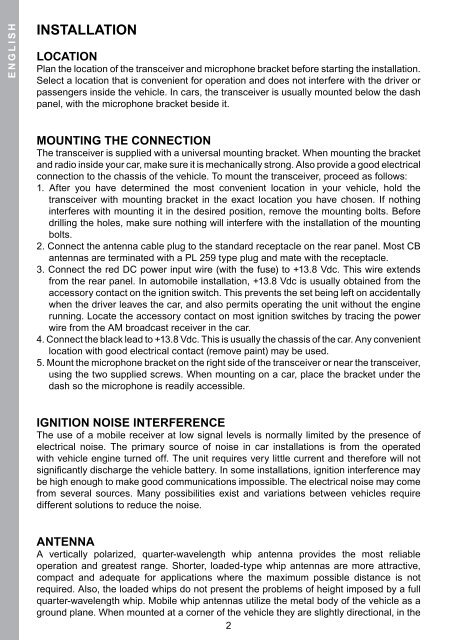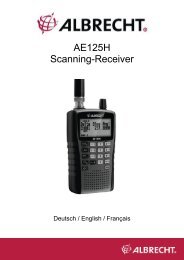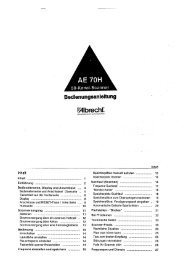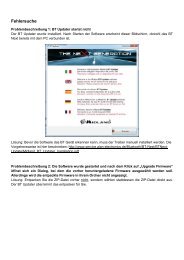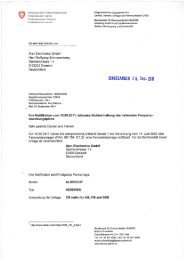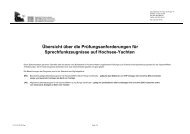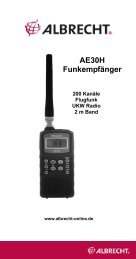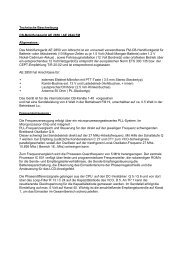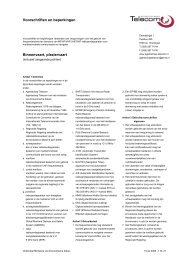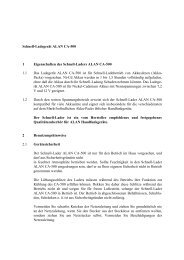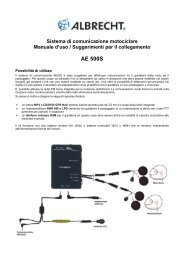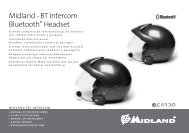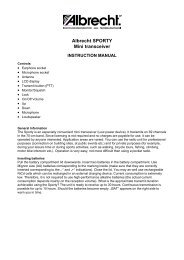ALAN 8001S EURO
ALAN 8001S EURO
ALAN 8001S EURO
Create successful ePaper yourself
Turn your PDF publications into a flip-book with our unique Google optimized e-Paper software.
E N G L I S H<br />
INSTALLATION<br />
LOCATION<br />
Plan the location of the transceiver and microphone bracket before starting the installation.<br />
Select a location that is convenient for operation and does not interfere with the driver or<br />
passengers inside the vehicle. In cars, the transceiver is usually mounted below the dash<br />
panel, with the microphone bracket beside it.<br />
MOUNTING THE CONNECTION<br />
The transceiver is supplied with a universal mounting bracket. When mounting the bracket<br />
and radio inside your car, make sure it is mechanically strong. Also provide a good electrical<br />
connection to the chassis of the vehicle. To mount the transceiver, proceed as follows:<br />
. After you have determined the most convenient location in your vehicle, hold the<br />
transceiver with mounting bracket in the exact location you have chosen. If nothing<br />
interferes with mounting it in the desired position, remove the mounting bolts. Before<br />
drilling the holes, make sure nothing will interfere with the installation of the mounting<br />
bolts.<br />
2. Connect the antenna cable plug to the standard receptacle on the rear panel. Most CB<br />
antennas are terminated with a PL 259 type plug and mate with the receptacle.<br />
3. Connect the red DC power input wire (with the fuse) to + 3.8 Vdc. This wire extends<br />
from the rear panel. In automobile installation, + 3.8 Vdc is usually obtained from the<br />
accessory contact on the ignition switch. This prevents the set being left on accidentally<br />
when the driver leaves the car, and also permits operating the unit without the engine<br />
running. Locate the accessory contact on most ignition switches by tracing the power<br />
wire from the AM broadcast receiver in the car.<br />
4. Connect the black lead to + 3.8 Vdc. This is usually the chassis of the car. Any convenient<br />
location with good electrical contact (remove paint) may be used.<br />
5. Mount the microphone bracket on the right side of the transceiver or near the transceiver,<br />
using the two supplied screws. When mounting on a car, place the bracket under the<br />
dash so the microphone is readily accessible.<br />
IGNITION NOISE INTERFERENCE<br />
The use of a mobile receiver at low signal levels is normally limited by the presence of<br />
electrical noise. The primary source of noise in car installations is from the operated<br />
with vehicle engine turned off. The unit requires very little current and therefore will not<br />
significantly discharge the vehicle battery. In some installations, ignition interference may<br />
be high enough to make good communications impossible. The electrical noise may come<br />
from several sources. Many possibilities exist and variations between vehicles require<br />
different solutions to reduce the noise.<br />
ANTENNA<br />
A vertically polarized, quarter-wavelength whip antenna provides the most reliable<br />
operation and greatest range. Shorter, loaded-type whip antennas are more attractive,<br />
compact and adequate for applications where the maximum possible distance is not<br />
required. Also, the loaded whips do not present the problems of height imposed by a full<br />
quarter-wavelength whip. Mobile whip antennas utilize the metal body of the vehicle as a<br />
ground plane. When mounted at a corner of the vehicle they are slightly directional, in the<br />
2


